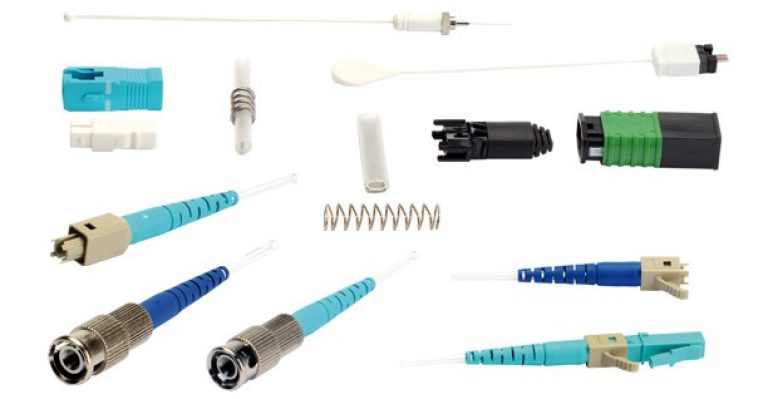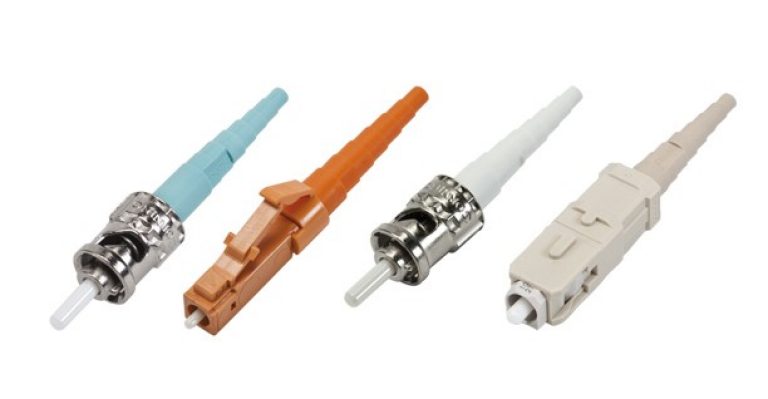The Future of Fiber Optic Connectors: Trends and Advancements

Fiber Optic Connectors: An Overview
Fiber optic connectors are vital components in modern communication systems, enabling high-speed and long-distance data transmission. These connectors play a crucial role in connecting optical fibers, allowing the seamless transfer of information. This blog provides an in-depth exploration of fiber optic connectors, covering their types, characteristics, and key components. Understanding the different types of fiber optic connectors, such as SC, LC, ST, and MPO connectors, is essential for professionals working with fiber optic cables. Additionally, this blog offers valuable insights into installation best practices, maintenance guidelines, and troubleshooting techniques to ensure optimal performance of fiber connectors.
Exploring Fiber Optic Connector Types and Characteristics
Types of Fiber Optic Connectors
There are various types of fiber optic connectors available, each serving specific purposes in different applications. Some common types include SC (Subscriber Connector), LC (Lucent Connector), ST (Straight Tip), and MPO (Multi-Fiber Push-On) connectors.
SC connectors are widely used in data communication networks and offer excellent performance with low insertion loss.
LC connectors are popular for their small form factor, making them ideal for high-density applications such as data centers.
ST connectors are commonly used in networking environments and provide a sturdy connection with good mechanical stability.
MPO connectors are designed to accommodate multiple fibers, enabling efficient connectivity in high-speed data transmission systems.
Characteristics of Fiber Optic Connectors
Fiber optic connectors possess several key characteristics that make them highly desirable for communication systems:
High Bandwidth: Fiber optic connectors have the capability to support high bandwidths, allowing for the transmission of large amounts of data at fast speeds.
Low Loss: These connectors minimize signal loss during transmission, ensuring reliable and efficient data transfer over long distances.
Electromagnetic Interference Resistance: Fiber optic connectors are immune to electromagnetic interference, making them suitable for environments with high levels of electrical noise.
Secure Connections: The design of fiber optic connectors ensures secure connections that are resistant to accidental disconnections or tampering.
Understanding the different types and characteristics of fiber optic connectors is crucial for selecting the appropriate connector for specific applications. This knowledge enables professionals to optimize their communication systems and ensure reliable data transmission.

Best Practices for Fiber Optic Connector Installation, Maintenance, and Troubleshooting
Installation of Fiber Optic Connectors
Proper installation of fiber optic connectors is crucial to ensure optimal performance and reliable data transmission. Here are some best practices to follow:
Cleaning and Inspection: Before installation, it is essential to clean the fiber ends using lint-free wipes and inspect them for any dirt or damage. This helps maintain signal integrity and prevents contamination.
Precise Alignment: Achieving precise alignment between the connector and the mating adapter is vital for minimizing insertion loss. Careful alignment ensures that the fibers are properly aligned, allowing efficient light transmission.
Secure Connections: It is important to ensure that the connectors are securely mated with their corresponding adapters. Loose connections can lead to signal loss or intermittent connectivity issues.
Maintenance and Troubleshooting Tips
Regular maintenance of fiber optic connectors helps prevent signal degradation and ensures optimal performance. Here are some tips for maintenance and troubleshooting:
Regular Inspection: Periodically inspecting fiber optic connectors for signs of damage, such as scratches or cracks, can help identify potential issues early on. Regular inspections also allow for timely cleaning if contamination is detected.
Cleaning Procedures: Proper cleaning techniques using approved solvents or cleaning tools should be followed to remove dust, oils, or other contaminants from the connector end faces. Cleaning should be done gently in a controlled environment.
Troubleshooting Techniques: When troubleshooting fiber optic connectors, checking for loose connections, damaged cables, or faulty components is essential. Re-seating connectors, replacing damaged cables, or consulting professionals may be necessary to resolve connectivity issues.
Following these best practices for installation, maintenance, and troubleshooting ensures that fiber optic connectors perform optimally and contribute to reliable data transmission.
Advantages of Fiber Optic Connectors: A Comparison
Advantages of Fiber Optic Connectors
Fiber optic connectors offer numerous advantages that make them the preferred choice for high-speed data transmission and secure connections:
High-Speed Data Transmission: Fiber optic connectors enable the transmission of data at incredibly fast speeds, making them ideal for applications that require real-time communication and large bandwidth.
Large Bandwidth: With their ability to support a wide range of frequencies, fiber optic connectors provide ample bandwidth for transmitting vast amounts of data simultaneously.
Immunity to Electromagnetic Interference: Unlike copper connectors, fiber optic connectors are immune to electromagnetic interference. This ensures reliable performance even in environments with high levels of electrical noise.
Secure Connections: Fiber optic connectors provide secure connections that are resistant to eavesdropping or tampering. The use of light signals for data transmission adds an extra layer of security, making it difficult to intercept or manipulate the transmitted information.
Comparison with Other Connector Types
When compared to other connector types such as copper and wireless connectors, fiber optic connectors have distinct advantages:
Fiber Optic vs. Copper Connectors: Fiber optic connectors have a significantly higher bandwidth and longer reach compared to copper connectors. They are also immune to electromagnetic interference, ensuring better signal quality over longer distances.
Fiber Optic vs. Wireless Connectors: In terms of reliability and security, fiber optic connectors outperform wireless connectors. While wireless connections can be affected by environmental factors or signal interference, fiber optics provide a more stable and secure connection.
The advantages offered by fiber optic connectors make them indispensable in various industries where high-speed data transmission, large bandwidth, and secure connections are essential requirements.

The Future of Fiber Optic Connectors: Trends and Advancements
Emerging Trends in Fiber Optic Connectors
The future of fiber optic connectors is marked by several emerging trends that are shaping the industry:
Miniaturization of Connectors: As technology continues to advance, there is a growing demand for smaller and more compact connectors. Miniaturization allows for space-saving applications, making fiber optic connectors suitable for devices with limited physical space.
Increased Adoption in IoT Devices: With the rise of the Internet of Things (IoT), there is a significant increase in the adoption of fiber optic connectors. These connectors provide reliable and high-speed connectivity, making them ideal for IoT devices that require seamless communication.
Advancements in Fiber Optic Connector Technology
Advancements in fiber optic connector technology are driving improvements in data transmission speeds, performance, and durability:
Higher Data Transmission Speeds: Ongoing research and development efforts are focused on achieving even higher data transmission speeds. Improved connector designs, along with advancements in optical components, enable faster and more efficient data transfer.
Integration of Advanced Materials: The integration of advanced materials into fiber optic connectors enhances their performance and durability. New materials with superior mechanical properties and resistance to environmental factors contribute to longer-lasting and more reliable connectors.
The future holds great potential for fiber optic connectors as they continue to evolve to meet the demands of various industries. These advancements will pave the way for faster communication systems, improved connectivity, and enhanced reliability.
Embracing the Future of Fiber Optic Connectors
Fiber optic connectors play a vital role in advancing communication systems, enabling high-speed and reliable data transmission. As technology continues to evolve, the future of fiber optic connectors holds immense potential for various industries and applications. Continued research and development efforts will lead to further advancements and innovations in connector design, materials, and performance. These advancements will result in faster data transmission speeds, improved connectivity, and enhanced reliability. By embracing the future of fiber optic connectors, we can unlock new possibilities in telecommunications, data centers, IoT devices, and other fields where seamless communication is essential.
See Also
The Future of SC APC Fiber Optic Cables: Advantages, Applications, and Installation
Patch Cord MPO vs Patch Cord RJ45: Confronto e Scelta Migliore
Exploring the Pros and Cons of PLC Blockless Splitters in Fiber Optic Networks
The Ultimate Guide to HDMI Cables: Function, Importance, and Future Developments
About US
Follow Us
AnetFiber company's main products are indoor and outdoor optical fiber cables, outdoor waterproof pre-connected fiber-to-the-home products, PLC optical fiber splitters, optical fiber jumpers and pigtails, MTP®/MPO high-density big data product solutions, optical fiber field quick connectors and research and development molding, injection molding and production of optical fiber distribution boxes, optical fiber chassis cabinets, the market has expanded to the world, Europe, America, Asia, the Middle East and Latin America.
Address
Shenzhen City, Baoan District, Yanluo Street, Tangxiayong Community, Yangyong Industrial Road, Tonggangda New Energy Vehicle Park 406
Contacts
+86 199 2655 3586

